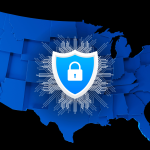One of the most critical investments high-risk retail businesses should make is investment in the security training of their team members. All forms of businesses invest in their training programs, so why should high-risk retail be different?
Let’s start by clarifying what “high-risk” businesses are for the purposes of this article. These businesses operate high demand products or services where cash is the main form of payment inbound or outbound of the business. This includes cannabis, pawn, gambling, and jewelry. Due to the inherent nature of cash flow in these businesses, they are naturally at a higher risk for unethical activity. And some states (Oklahoma and Washington as examples) are experiencing critical incidents at these businesses at an alarming rate. Visit sapphirerisk.com to view all the products and services we have to offer high-risk businesses.
So why is security training a critical investment in these high-risk businesses? Proper training has been shown to dramatically improve productivity, performance, and morale in team members that state they have been “effectively trained” while reducing losses and inefficiencies throughout the businesses where advanced training has been a specific target. In businesses that naturally have a higher risk for incidents, it is imperative that team members know how to handle each situation that could potentially develop.
The solution to high-risk security training can be broken down into five main concepts:
- Train relevant topics using relevant methods!
- Be impactful with your training!
- Training repetition!
- Test for comprehension and understanding!
- Motivate your team for Security success!
Let’s explore each topic in a little more depth:
Train relevant topics using relevant methods!
Prior to conducting any training, consider the topic or topics you wish to train for that particular session. Try to limit the training to a few key topics to prevent information overload and/or losing the interest of your trainees. Provide training that is important to them. For example, there is no need to discuss anti-phishing training with team members who do not have access to store level email. And lastly, ensure you deliver the material through a variety of methods during the session. Be interactive, provide visual aids, and encourage and reward participation to keep all team members involved.
Be impactful with your training!
Deliver your training in clear concise points. Emphasize the matters of greatest importance, and don’t waste time by getting stuck in long conversations on tangents and items of low value. Deliver key messages emphatically! Varying rate of word delivery and volume control on points you deliver are excellent ways of keeping team members engaged during spoken points. For group or individual exercises, choose events that support the topic you are currently delivering. Design your training class creatively and set the necessary time for realistic examples and activities.
Training for “Muscle Memory”
Repeat, repeat, and then repeat again critical points of training. No one can predict exactly how they will react in the event a firearm is placed in front of their face for the first time, or they hear gunshots from the hallway. By repeating and reinforcing material, it provides team members with a stronger base of reacting according to their training. The more often they hear the same material, the more likely they are to use it when an event happens and their fight-or-flight response kicks in. Safety and security protocols should be second nature in high-risk businesses, and all team members should be able to immediately react appropriately during those incidents.
Test for comprehension and understanding!
All the training in the world does no good if the team members don’t understand it, or don’t want to use it. Throughout your training presentation, you should ask questions and challenge your participants. Get their feedback on the material so far. Ask them to think about the material presented and give them the ability to comment or reply in ways they see the material helping them through their normal daily work routine. Testing is a common solution but not always the only one available. Be creative in your questions, and always relate it back to how they will implement it in what they do every day. Not only does this ensure team member buy in with the material but gets them thinking about how the training will impact them and their teammates.
Motivate them for success!
Security training can often times be dry, and topics covered can be quite serious in nature. Ensure they understand the trainer is preparing them for real issues they could potentially face in their normal course of business, and how the training could impact the lives of themselves, their co-workers, and their customers. Provide them with the sense that the training is serious in nature, but that they have the ability to ensure a positive outcome. Set them on the right path and reinforce with your belief in their ability to handle delicate situations.
Conclusion
It cannot be stressed enough how important security training can be in these high-risk businesses. By following the items mentioned in the training plan above, it will help you deliver relevant, impactful training that is clearly understood by your team members and provides the safest environment possible for your team members, clients, vendors, customers, and neighborhood. Let Sapphire Risk schedule your training classes today. Visit mysapphiretraining.com to get started!
Author

As the Senior Asset Protection Consultant for Sapphire Risk Advisory Group, Jeff manages the company’s Phase 3 projects, which includes standard operating procedures (SOPs), security employee training, on-site comprehensive risk assessments, Culture of Honesty programs, and robbery awareness.
Jeff has experience in the Security/Asset Protection field for over 30 years in high-risk retail and logistics security across North America.
How Can Sapphire Risk Help?
Tony Gallo and the team of experts and consultants at Sapphire Risk Advisory Group have worked to secure medical marijuana and recreational cannabis businesses in 36 states. Follow us on social media to stay up to date with more security best practices and cannabis industry updates!
- California Senate Bill 69 Adds CEQA Requirements for New Cultivators

- Top 5 Cannabis Security and Surveillance Violations

- Peace of Mind in the Retail Sector: Facility Security

- Opportunities in the Ohio (O-High-O) Cannabis Market

- Building Security and Trust: Verifying Identification and Payments

- The Importance of Loss Prevention

- Thoughts to Improve Cannabis Security Regulations Across the Nation

- Opportunities in the Minnesota Cannabis Market

- U.S. Cannabis Legalization 2023 Update

- How to Present Your Cannabis Business Vision to Your City


